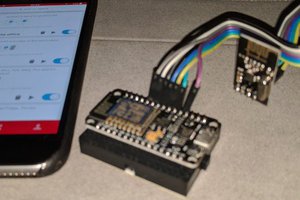The scope of this project is to develop a new modern solution for data acquisition, command and control of industrial processes, based on a development low power board. This solution is designed for didactic and research activities on the FESTO didactic stands available in ED007 Laboratory. The result of this project will be an upgrade on the above mentioned stands that will make them more interactive to learning process by means of Bluetooth connectivity (version BLE 4.0). This will enable the didactic stands to become connectable to any mobile device passing by, that implements the communication protocol and uses a dedicated SW App. (e.g. smartphone, tablet, etc), giving an alternative to the dedicated acquisition boards NI PXI-6229 connected to the PC or to the Siemens PLC.
The local controller will allow the implementation of a digital command with the following form u [k] = f (u [k-1], ..., y [k-1], ...) which will include PID and RST. It will also allow remote control function (digital controller is implemented externally); In addition, it will provide options for experimental identification procedures;
Research & Development support enabled by the new platform:
-> linear digital control digital (PID, RST) and nonlinear digital control;
-> sampled data control;
-> network control (input/output time delay systems);
-> system identification.
Formative objectives:
-> Collaborative team work (sharing tasks, timing)
-> Development of design skills HW & SW applications in real time
-> Develop competencies related to deployment in different environments HW SW;
-> Documentation and analysis skills development (search / proposal of possible solutions, choosing the optimal solution and argumentation, solution integration server)
-> Study the functionalities and implementation of a control solution for a real time system
-> Study the effect of time delay in communication and it's effect over control strategies;
-> Learning trend technologies (BLE, LowPower, FOTA, etc.)
 Valentin Tanasa
Valentin Tanasa
 Tim van Iersel
Tim van Iersel
 Taylor
Taylor
 djsb
djsb
 George Delaportas
George Delaportas